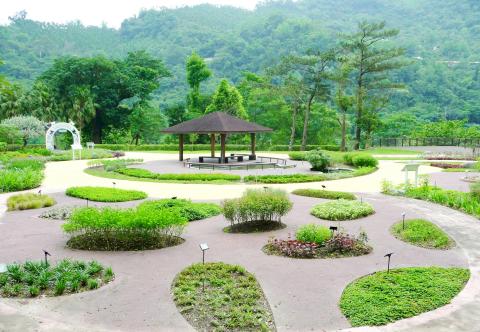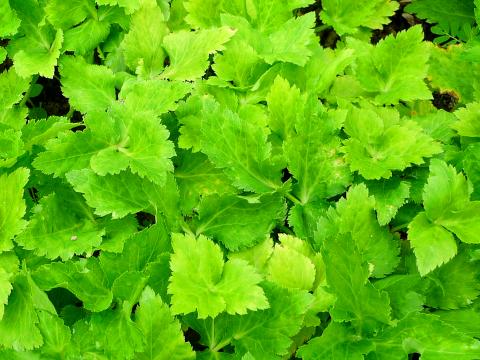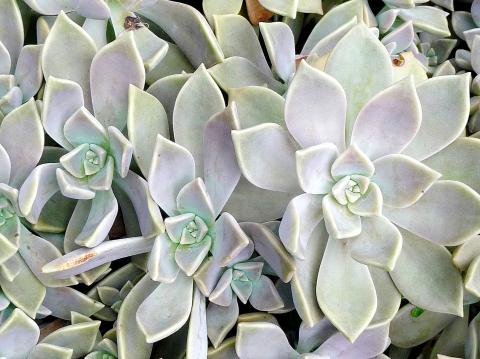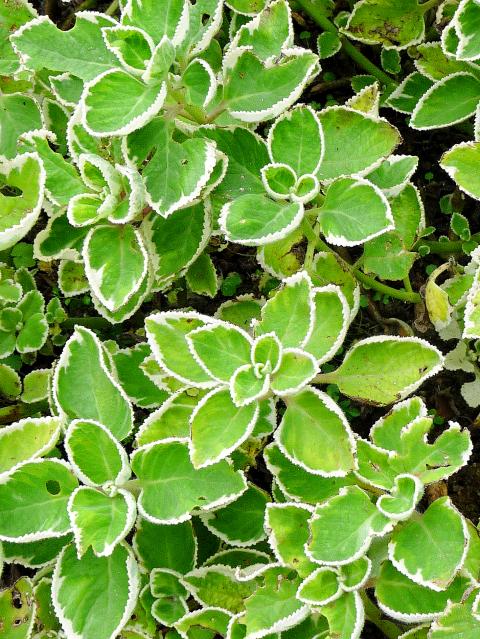For thousands of years, in Taiwan as in many parts of the world, herbs have been used to flavor food and to treat various ailments.
Locally, the overlap between cuisine and medicine is considerable. As Cathy Erway, author of The Food of Taiwan, recently told me by e-mail: “Plenty of everyday foods and drinks are known to have medicinal qualities, like grass jelly (仙草, Platostoma palustre, Chinese mesona or xiancao). It’s made from a herb that has cooling and refreshing qualities, but not much taste. Then there are much more assertive flavors consumed for their health benefits, like bitter melon juice (苦瓜汁). Both are so common it’s hard to tell if people eat or drink them for the medicinal effects, or purely because they like them. But there’s definitely an ingrained sense of food as medicine among eaters in Taiwan, more so than in the West.”
Over the past half century, Taiwan’s lowlanders have lost much of the traditional ecological knowledge that helped their ancestors survive. Among indigenous elders, however, there’s still a wealth of know-how which researchers are endeavoring to preserve.

Photo: Steven Crook
A survey, conducted a decade ago among eight extended families in a Bunun (布農族) community in Nantou County, identified 264 useful plant species. Over half had more than one function: 142 were food plants, while 65 could be used to make tools. Some 37 had medicinal applications, while 10 were suitable for making clothes or footwear.
A good place to see versatile plants is the Hundred Herbs Garden (百草園) inside Jhihben National Forest Recreation Area (知本森林遊樂區), about 18km southwest of Taitung City. The garden covers around 1,000 square meters and displays more than 50 herb species.
Some interesting information about the garden’s plants — among them the grass jelly mentioned by Erway — is presented on-site in English, but for the majority of species, there’s nothing beyond the scientific name. In this article, I aim to fill a few of the gaps, so international travelers can get a bit more out of their visit.

Photo: Steven Crook
National Taiwan University’s “Plants of Taiwan” Web pages lists Eupatorium formosanum (台灣澤蘭) as endemic to Taiwan, and according to other sources, this perennial herb also grows in Japan’s Ryukyu Islands. It’s been used to treat cholera, hemorrhoids, inflammation, neuralgia, prenatal edema, rheumatism and other conditions.
Eupatorium formosanum was first described in 1908 by Bunzo Hayata (1874-1934), a Japanese botanist who made a huge contribution to the study of Taiwan’s flora. Between 1900 and 1921, he named around 1,600 new taxa of vascular plants from the island. Among them is Taiwania cryptomerioides (台灣杉), one of the largest tree species in Asia.
Curiously, according to a 2009 paper outlining Hayata’s life and work, the Japanese scientist, “did not accept Darwin’s concept of evolution, the survival of the fittest, but instead believed in the eternal life of species based on the diversity of plants in the tropics that he observed during his work in Taiwan and Indochina.”

Photo: Steven Crook
Aspidistra elatior var. Attenuata (台灣蜘蛛抱蛋) is an endemic variation of a plant also found in Japan and China. The latter is known to gardening enthusiasts in the English-speaking world as the “Cast Iron Plant,” because it thrives even when neglected.
For a long time, it was believed that this plant was pollinated by slugs — rather than by flying insects, like the vast majority of plants. However, a few years ago scientists in Japan discovered that its flowers are pollinated by fungus gnats. It’s thought the flowers’ appearance and odor fool the gnats into thinking they’re mushrooms.
If you rub your fingers on the leaves of Cryptotaenia japonica (鴨兒芹), you’ll likely recognize the smell, and understand why the species is also called East Asian wild parsley. Like the garden parsley (Petroselinum crispum) that’s native to countries around the Mediterranean, it’s a member of the Apiaceae family, and thus related to celery and carrot. The leaves of Cryptotaenia japonica are used as a garnish, while the roots and stems are often eaten as a vegetable.

Photo: Steven Crook
A succulent plant native to Madagascar, Bryophyllum pinnatum (落地生根) is now considered a naturalized species in Taiwan. According to The Catalog of Medicinal Plant Resources in Taiwan (臺灣藥用植物資源名錄), published in 2003 by the Department of Health (predecessor to Taiwan’s Ministry of Health and Welfare), various parts of the plant can relieve sore throats and excessive phlegm, and help in cases of gastrointestinal bleeding. It’s also said to have some effect against hypertension. Overconsumption could be dangerous, however; the plant contains toxic compounds that appear to have induced fatal heart problems in grazing animals.
Plectranthus amboinicus (左手香, sometimes called Mexican mint) gets its Chinese name because those who handle its white-fringed leaves will afterward find a pleasant oregano-like scent on their hands. A traditional treatment for colds, fevers and throat irritations is to take some of the leaves, wash them, apply some salt and then either chew them, or crush them into a juice which is drunk. Local herbalists have also used this plant to treat heat-stroke, vomiting, chest pains and abdominal pain. In the Taiwan of yore, the leaves were also used to keep freshly-laundered clothes smelling good, and to scent a woman’s hair.
The Chinese name for Graptopetalum paraguayense means “stone lotus” (石蓮花), and the leaves do indeed look as if they’re carved from marble. English speakers sometimes call this succulent perennial “Ghost Plant” on account of its color, and a small number of people eat the leaves as a vegetable. Stripping off the thick gray skin reveals greenish flesh which quickly breaks down when cooked with chicken in a soup.
Traditional folk medicine claims this plant is useful for treating cirrhosis and other liver problems, high blood pressure and gout. There could be some truth in this: Earlier this year, Taiwanese scientists published a study suggesting that extracts of Graptopetalum paraguayense can prevent liver inflammation and fibrosis in rats.
Also represented in the garden is Chinese wormwood, aka fragrant silver weed (Crossostephium chinense, 蘄艾). It has small yellow flowers in summertime, and preparations made from its roots and leaves are said to be good at combating phlegm, relieving flatulence or increasing menstrual flow. Even if you’re highly skeptical about such claims, you’ll agree: What’s not to enjoy about this patch of unusual biodiversity?
Steven Crook has been writing about travel, culture, and business in Taiwan since 1996. He is the co-author of A Culinary History of Taipei: Beyond Pork and Ponlai, and author of Taiwan: The Bradt Travel Guide, the third edition of which has just been published.

Oct. 27 to Nov. 2 Over a breakfast of soymilk and fried dough costing less than NT$400, seven officials and engineers agreed on a NT$400 million plan — unaware that it would mark the beginning of Taiwan’s semiconductor empire. It was a cold February morning in 1974. Gathered at the unassuming shop were Economics minister Sun Yun-hsuan (孫運璿), director-general of Transportation and Communications Kao Yu-shu (高玉樹), Industrial Technology Research Institute (ITRI) president Wang Chao-chen (王兆振), Telecommunications Laboratories director Kang Pao-huang (康寶煌), Executive Yuan secretary-general Fei Hua (費驊), director-general of Telecommunications Fang Hsien-chi (方賢齊) and Radio Corporation of America (RCA) Laboratories director Pan
The consensus on the Chinese Nationalist Party (KMT) chair race is that Cheng Li-wun (鄭麗文) ran a populist, ideological back-to-basics campaign and soundly defeated former Taipei mayor Hau Lung-bin (郝龍斌), the candidate backed by the big institutional players. Cheng tapped into a wave of popular enthusiasm within the KMT, while the institutional players’ get-out-the-vote abilities fell flat, suggesting their power has weakened significantly. Yet, a closer look at the race paints a more complicated picture, raising questions about some analysts’ conclusions, including my own. TURNOUT Here is a surprising statistic: Turnout was 130,678, or 39.46 percent of the 331,145 eligible party

The classic warmth of a good old-fashioned izakaya beckons you in, all cozy nooks and dark wood finishes, as tables order a third round and waiters sling tapas-sized bites and assorted — sometimes unidentifiable — skewered meats. But there’s a romantic hush about this Ximending (西門町) hotspot, with cocktails savored, plating elegant and never rushed and daters and diners lit by candlelight and chandelier. Each chair is mismatched and the assorted tables appear to be the fanciest picks from a nearby flea market. A naked sewing mannequin stands in a dimly lit corner, adorned with antique mirrors and draped foliage

The election of Cheng Li-wun (鄭麗文) as chair of the Chinese Nationalist Party (KMT) marked a triumphant return of pride in the “Chinese” in the party name. Cheng wants Taiwanese to be proud to call themselves Chinese again. The unambiguous winner was a return to the KMT ideology that formed in the early 2000s under then chairman Lien Chan (連戰) and president Ma Ying-jeou (馬英九) put into practice as far as he could, until ultimately thwarted by hundreds of thousands of protestors thronging the streets in what became known as the Sunflower movement in 2014. Cheng is an unambiguous Chinese ethnonationalist,